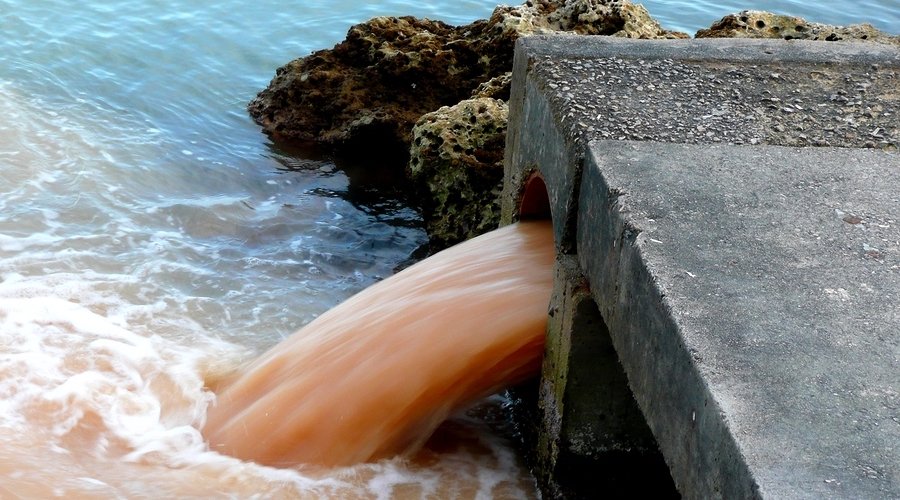When I first moved to Hawaii, I took my dog to the vet after noticing blood in her urine. It turned out she had a bladder infection. “Has she been swimming lately?” the vet asked. Indeed, she had enjoyed the water at a popular local beach several times that week.
“She probably got the infection from the water,” the vet told us. “That beach gets contaminated after a rain.”
I was shocked because the beach in question had just been named one of the 10 best in the US. It looks like a tropical paradise, with soft white sand and turquoise water, and it’s always full of swimmers. But it’s also a beach that has a river emptying into it, and after a rain, sewage and other contaminants float down the river and wash right into the sea. Since female dogs have a much shorter urethra than humans, they’re more prone to bladder infections. I didn’t know about the contamination at the time, but later, I learned that the Hawaii locals wouldn’t dream of swimming at certain beaches that tourists routinely mobbed. It took me several unfortunate incidents before I learned to be smart about when and where to swim. In the interim, my husband contracted Leptospirosis after paddle-boarding a little too close to the river inlet at a different world-famous beach after a rain.
While it may be obvious you should avoid swimming at beaches where there are riptides and shark warnings, there also are certain types of bacterial infection that may not be visible to the eye but can lurk in water and cause profound harm. You might have heard about some of the more bizarre cases of such infection, such as people dying from flesh-eating bacteria after swimming in Florida’s Gulf Coast last year.1 “Flesh-eating bacteria cases on the rise, researchers call for urgent response.” 15 April 2016. Medical Express. 27 August 2018. http://medicalxpress.com/news/2018-04-flesh-eating-bacteria-cases-urgent-response.html But less dramatic forms of infection are more widespread than you might think. In fact, infection from watersports is so common that there’s an official term to describe the syndrome: RWI, or Recreational Water Illness.2 “Recreational Water Illnesses.” Medicinenet.com. 28 August 2018. http://www.medicinenet.com/recreational_water_illnesses_rwis/article.htm#recreational_water_illness_rwis_facts
You can contract a bacterial infection from virtually any body of water, whether it be an ocean beach, a river, a stream deep in the woods, a fountain, or even in a chlorinated pool. Even splashing in the wrong puddle after a rain, under certain circumstances, can be your downfall. There was an epidemic of canine Leptospirosis throughout Sonoma County, California, last year during the rainy season. Experts said dogs were getting infected from rain puddles because infected rats walked through those puddles and shed infectious bacteria, and then the dogs walked through the puddles and were exposed. Unlike their owners, the dogs had no shoes for protection.
After hurricanes, floods, or heavy rains, the risk of infection goes up in affected suburban and urban areas because rushing water has picked up infected soil or sometimes sewage. You are far more vulnerable if you have a scratch, cut, or open wound when you enter the water. Also, drinking infected water is a recipe for infection, even if you accidentally swallow just a tiny bit while swimming.
Among the more common types of bacterial infection, Leptospirosis ranks high. Symptoms include high fever, headaches, muscle aches, jaundice, vomiting, abdominal pain, rash, and diarrhea. Leptospirosis also can cause meningitis, liver and kidney failure if the disease progresses. The disease is carried in animal urine.3 “Recreational Water Illnesses.” Medicinenet.com. 28 August 2018. http://www.medicinenet.com/recreational_water_illnesses_rwis/article.htm#recreational_water_illness_rwis_facts It’s often spread in areas where there’s agricultural runoff. If an infected pig, cow, or goat urinates in a field and then rain carries the contaminated soil to a river or stream, that water can become unsafe, as can any water the stream or river empties into. Many ocean beaches have streams or rivers emptying into them. Also, as noted above, rodents often contract the disease after running through an infected field, and then they carry the bacteria to neighboring areas. In fact, experts guess that 20 percent of rats in the Western hemisphere are infected with Leptospirosis.4 “What is Leptospirosis?” WebMD. 28 August 2018. http://www.webmd.com/a-to-z-guides/what-is-Leptospirosis#1 [Keep in mind that rats are the most populous mammal on the planet, with billions of them in the Western hemisphere alone–and 20% of billions is a lot of infected animals.] Leptospirosis is treated with antibiotics and most people do recover, but the disease can be serious.
Other common parasites found in recreational water include Giardia, Shigella, E. coli, and Cryptosporidia.5 “Recreational Water Illnesses.” MedicineNet.com. 29 August 2018. http://www.medicinenet.com/recreational_water_illnesses_rwis/article.htm#where_are_recreational_water_illnesses_rwis_found Crypto is a parasite that has the distinction of being chlorine resistant, which means you can get infected in a chlorinated pool. In fact, cases of Crypto have been increasing exponentially, with a 200 percent rise in reported cases between 2004 and 2008, and experts say all forms of RWI have become more common. The most common symptom caused by all these germs is diarrhea, but serious complications such as dehydration can occur, particularly in those with already compromised immune systems.
There’s no reason to let fear of getting sick stop you from swimming, but you can take some precautions that will reduce your risk. Here are a few good rules to follow:
- Avoid swimming in streams or rivers right after a rainstorm. If it was a heavy rain, wait a day or two.
- Avoid swimming near river or stream inlets at the ocean. There’s no problem at an ocean beach that lacks river outlets, but if the beach has a stream or river feeding into it, stay far away from the inlet.
- Never swim in murky water, even if you see others splashing around. Keep your dogs out, too. Even if the water isn’t rife with parasites, if you’re at the ocean, sharks love to hide where it’s murky.
- Choose upstream swimming holes. If you swim near the origin point of a stream or river coming off a mountain, your chance of infection is far less than if you swim well along the stream’s path, after it’s had a chance to run through agricultural or industrial locations.
- Check water quality, if possible. Here’s a guide from the Environmental Protection Agency on how to find out if a particular beach is safe for swimming.
- Wash off before and after swimming in a pool, and if possible, choose fresh or saltwater rather than the chlorinated pool option. As we’ve written before, chlorine brings its own risks, and as mentioned above, it doesn’t necessarily kill the germs you need to avoid.
- If you’re on vacation, ask a local if the water is safe and clean before charging in or letting your pets swim.
References
| ↑1 | “Flesh-eating bacteria cases on the rise, researchers call for urgent response.” 15 April 2016. Medical Express. 27 August 2018. http://medicalxpress.com/news/2018-04-flesh-eating-bacteria-cases-urgent-response.html |
|---|---|
| ↑2, ↑3 | “Recreational Water Illnesses.” Medicinenet.com. 28 August 2018. http://www.medicinenet.com/recreational_water_illnesses_rwis/article.htm#recreational_water_illness_rwis_facts |
| ↑4 | “What is Leptospirosis?” WebMD. 28 August 2018. http://www.webmd.com/a-to-z-guides/what-is-Leptospirosis#1 |
| ↑5 | “Recreational Water Illnesses.” MedicineNet.com. 29 August 2018. http://www.medicinenet.com/recreational_water_illnesses_rwis/article.htm#where_are_recreational_water_illnesses_rwis_found |











